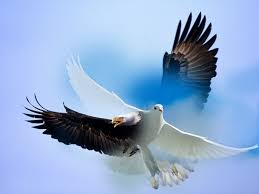Tuesday, April 14, 2020
– 3rd Quarter Moon Phase @6:56 PM: Complete, Revise, Realign
– Moon in Capricorn
– Best Days (from the Farmer’s Almanac) – Mow to Slow Growth, Castrate Farm Animals, Prune Trees, Wean, Potty Train
– Gardening tips April 12-14 (from the Farmer’s Almanac) –Favorable days for planting beets, carrots, turnips, radishes, onions, and other root crops.
– Aspect of the Aeon Sophia: (Wisdom): Chinnamasta, Goddess who expands the Mind
– Aspect of the Aeon Thelete: (Will/Desire): Ian, God of the East, God of Wisdom
– Sabian Symbol for the Solar-Lunar Year: “A Triangle with Wings”
SUN: 26 ARIES – A man possessed of more gifts than he can hold
EARTH: 26 LIBRA – An eagle and a large white dove turning into each other
Third Quarter Moon phase, the time of the lunar month when we take stock of what developed and any feedback or messages during Disseminating Moon phase and then assess what needs to be revised and realigned. This is all in service to the intentions, ideas, hopes, wishes, or dreams that were “seeded” during the New Moon phase. We are working on making things better. It’s like fertilizing and watering seeds so they have their best chance to make their way to the surface and sprout. This is conscious co-creation with the force of Life.
Today – April 14th, is another new years celebration. Today is considered Solar New Year throughout Southeast Asia. (the following was unceremoniously stolen from wikipedia)
Songkran is a term derived from the Sanskrit word, saṅkrānti (or, more specifically, meṣa saṅkrānti) and used to refer to the traditional New Year celebrated in Thailand, Laos, Cambodia, Myanmar, Sri Lanka, parts of northeast India, parts of Vietnam and Xishuangbanna, China. It begins when the sun transits the constellation of Aries, the first astrological sign in the Zodiac, as reckoned by sidereal astrology. It is related to the equivalent Hindu calendar-based New Year festivals in most parts of South Asia which are collectively referred to as Mesha Sankranti.In ancient times, the sun’s entry into Aries coincided with the equinox. However, due to the earth’s axial precession, the sidereal year is slightly longer than the tropical year, causing the dates to gradually drift apart. Today, the sun’s entry into Aries occurs around 18 April, according to astronomical definitions. Some traditional calendars are still marked by the sun’s actual movements while others have since been fixed to the Gregorian calendar.
